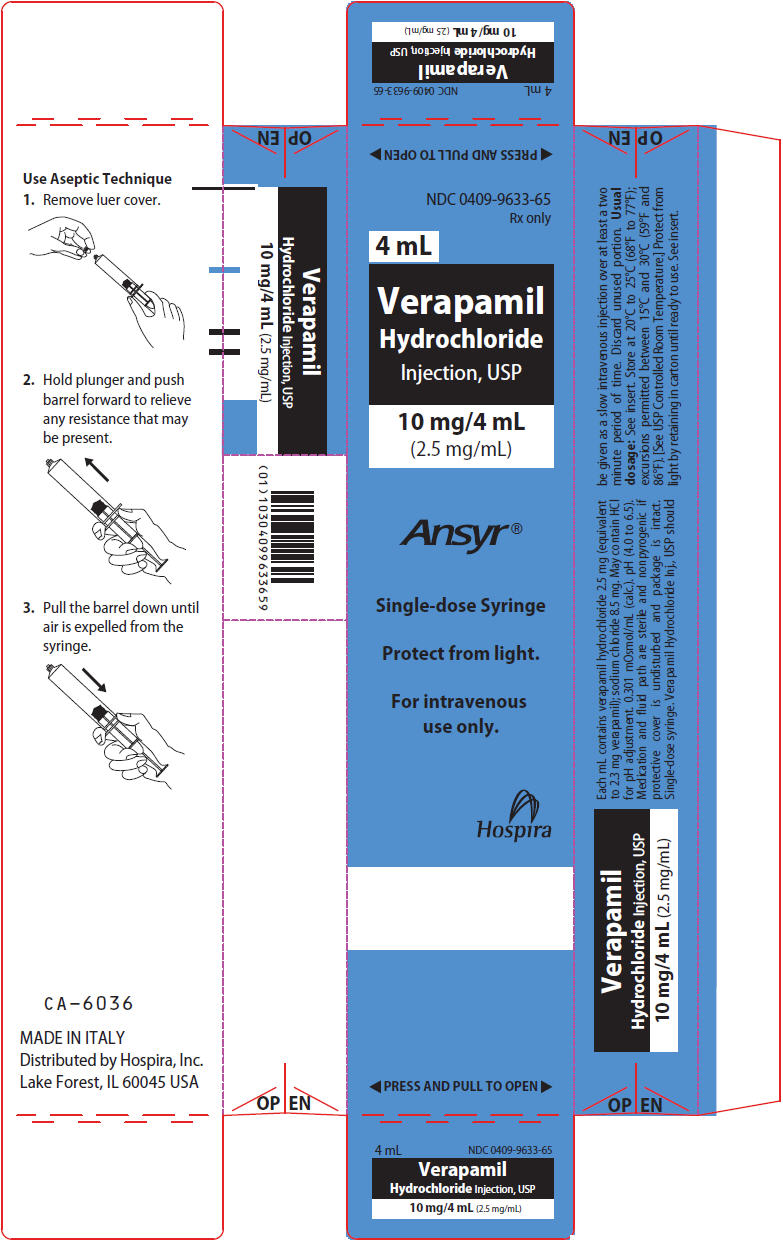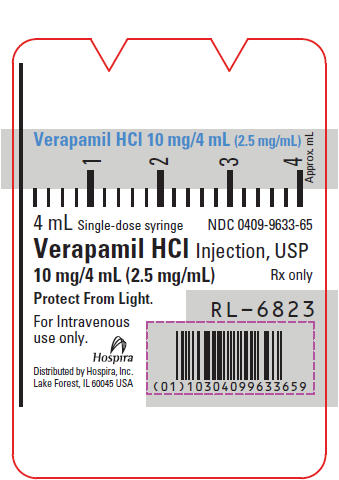Nutrients from the food that you eat passes to your breast milk. Its good idea to take healthy diet while breastfeeding. You may need to consume more calories per day to support healthy body system. Some time it gets necessary take medicine while you are breastfeeding and as other food items passes into breast milk, medicine passes as well hence it becomes obvious to understand its effects while breastfeeding. We have analyzed many medications and in this sheet we will present some fact and known information associated with Verapamil Hydrochloride Injection while breast-feeding.
What is Verapamil Hydrochloride Injection used for?
Verapamil Hydrochloride Injection, USP is indicated for the following: • Rapid conversion to sinus rhythm of paroxysmal supraventricular tachycardias, including those associated with accessory bypass tracts (Wolff-Parkinson-White [W-P-W] and Lown-Ganong- Levine [L-G-L] syndromes). When clinically advisable, appropriate vagal maneuvers (e.g., Valsalva maneuver) should be attempted prior to verapamil hydrochloride administration. • Temporary control of rapid ventricular rate in atrial flutter or atrial fibrillation except when the atrial flutter and/or atrial fibrillation are associated with accessory bypass tracts (Wolff-Parkinson-White (W-P-W) and Lown-Ganong-Levine (L-G-L) syndromes). In controlled studies in the United States, about 60% of patients with supraventricular tachycardia converted to normal sinus rhythm within 10 minutes after intravenous verapamil hydrochloride. Uncontrolled studies reported in the world literature describe a conversion rate of about 80%. About 70% of patients with atrial flutter and/or fibrillation with a faster ventricular rate respond with a decrease in ventricular rate of at least 20%. Conversion of atrial flutter or fibrillation to sinus rhythm is uncommon (about 10%) after verapamil hydrochloride and may reflect the spontaneous conversion rate, since the conversion rate after placebo was similar. Slowing of the ventricular rate in patients with atrial fibrillation/flutter lasts 30 to 60 minutes after a single injection. Because a small fraction (<1%) of patients treated with verapamil hydrochloride respond with life-threatening adverse responses (rapid ventricular rate in atrial flutter/fibrillation, and an accessory bypass tract, marked hypotension, or extreme bradycardia/asystole − see CONTRAINDICATIONS and WARNINGS), the initial use of verapamil hydrochloride injection should, if possible, be in a treatment setting with monitoring and resuscitation facilities, including D.C.-cardioversion capability (see ADVERSE REACTIONS, Suggested Treatment of Acute Cardiovascular Adverse Reactions). As familiarity with the patient's response is gained, use in an office setting may be acceptable. Cardioversion has been used safely and effectively after verapamil hydrochloride injection.
Verapamil Hydrochloride Injection while breastfeeding safe or not? Can there be any side effects for infant while using it during breastfeeding?
Verapamil hydrochloride is the only one ingredient used in manufacturing of Verapamil Hydrochloride Injection, Which makes it easier to analyze its effect in breastfeeding. As per our analysis of Verapamil hydrochloride it is safe to use Verapamil Hydrochloride Injection while lactating. We suggest you to check further details below about Verapamil hydrochloride usage in breastfeeding.
Verapamil Hydrochloride Injection Breastfeeding Analsys
SafeCAS Number: 152-11-4
It is excreted in breast milk in clinically non-significant amount and no problems have been observed in infants whose mothers were receiving this treatment.Plasma levels in these infants were undetectable or very low. Verapamil may induce to an increase of plasma Prolactin levels. American Academy of Pediatrics: usually compatible with breastfeeding medication.WHO List of Essential Medicines 2002: compatible with breastfeeding.
Verapamil Hydrochloride Injection Breastfeeding Analsys - 2
CAS Number: 52-53-9
Limited information indicates that maternal doses of verapamil up to 360 mg daily produce low levels in milk and newborns may have detectable verapamil serum levels, but levels are low. Verapamil would not be expected to cause any adverse effects in breastfed infants, especially if the infant is older than 2 months.

I am nursing mother and I have already used Verapamil Hydrochloride Injection, what should I do?
Verapamil Hydrochloride Injection is safe in breastfeeding and should not create any health problem for your baby but in case you feel any health issue associated with Verapamil Hydrochloride Injection you should contact your doctor or health care provider. Be it pregnancy or lactation you shall keep your doctor informed.
I am nursing mother and my doctor has suggested me to use Verapamil Hydrochloride Injection, is it safe?
Usage of Verapamil Hydrochloride Injection is safe for nursing mothers and baby, No worries.
If I am using Verapamil Hydrochloride Injection, will my baby need extra monitoring?
No
Who can I talk to if I have questions about usage of Verapamil Hydrochloride Injection in breastfeeding?
US
National Womens Health and Breastfeeding Helpline: 800-994-9662 (TDD 888-220-5446) 9 a.m. and 6 p.m. ET, Monday through Friday
UK
National Breastfeeding Helpline: 0300-100-0212 9.30am to 9.30pm, daily
Association of Breastfeeding Mothers: 0300-330-5453
La Leche League: 0345-120-2918
The Breastfeeding Network supporter line in Bengali and Sylheti: 0300-456-2421
National Childbirth Trust (NCT): 0300-330-0700
Australia
National Breastfeeding Helpline: 1800-686-268 24 hours a day, 7 days a week
Canada
Telehealth Ontario for breastfeeding: 1-866-797-0000 24 hours a day, 7 days a week



